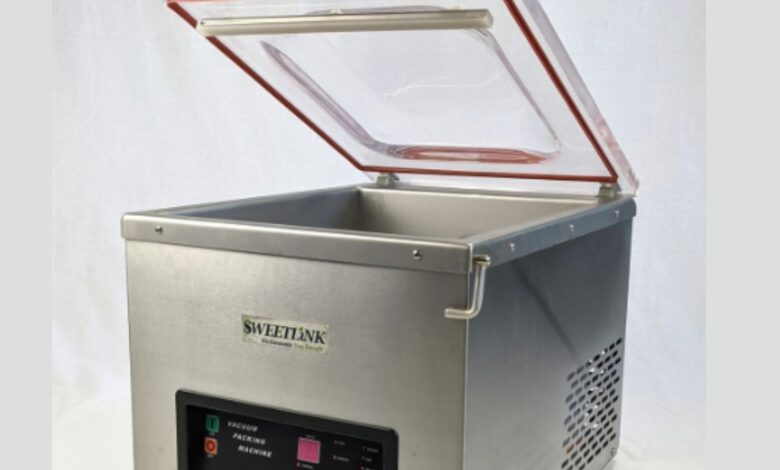What You Need to Understand About Vacuum Sealers

Many factors might compromise or affect the quality and integrity of food products that you consume. Factors like proper ventilation could help keep the air fresh, ridding the area of airborne bacteria and foul odors. That’s why it’s necessary to have your maintenance personnel do a regular inspection, preferably through double cam duct access doors to such areas. But are there other better ways of keeping your food fresh?
Any food service company or typical household has to reduce food waste and spoilage, and utilizing a vacuum sealer is a fantastic way of achieving just that. Vacuum-packed meals can survive up to 3-5 times longer than non-vacuum-packed foods, plus they’ll taste better because it removes most of the components that cause them to deteriorate.
Using a Vacuum Sealer
Step 1: Get the Correct Vacuum Bag
To begin, you will need vacuum sealer bags. They’re far more successful than ordinary plastic bags at maintaining a snug fit for many months. Plastic bags are prone to allowing air in, thereby reducing the effectiveness of a vacuum sealer. Some of the popular brands on the market are WeVac, Food Saver, and FoodVacBags.
While they may appear costly, you can typically utilize them at least twice before discarding them. You may also add an oxygen absorber to a not-so-robust bag. Additionally, some vacuum sealers can seal containers and glass jars. It’s ideal for pickles and other prepared foods that need to be frozen. If you choose this decision, make sure you buy a glass jar or container that you can vacuum seal.
Finally, remember that the vacuum sealer bag or container you use must be the correct dimensions for sealing the item. The seal won’t work if it’s too tiny. If it’s too big, you’ll waste disposable bags, which can quickly add up to your expense.
Step 2: Prepping the Food
If you’re vacuum-sealing meat products, ensure the slice is ready first. Take out any unnecessary parts and make it easier to store; chop the piece of meat into smaller parts. If the thing you’re packing has sharp points, you’ll need to wrap it in a soft material. It’ll suffice to use a paper dish towel. Once you close the bag, the sharp edges will not protrude through, resulting in a secure seal that will last a long time.
Step 3: Fill the Bag Correctly
It’s time to begin filling the bags after you have prepared everything and all is ready. Ensure to leave sufficient space between your food and the vacuum-sealed border. Allow three to five inches of the upper portion of the bag. You’ll achieve a good seal that won’t wear out over time if you apply it this way. You also have some leeway to begin again if your first attempt is a miss.
Step 4: Begin Vacuum Sealing
Place the vacuum sealing bag on the countertop and set it flat. Next, open the top of your vacuum sealer and put the bag’s opening on the sealing strip. Ensure the bag isn’t blocking the vacuum route. After that, you’ll want to shut the lid of your device tightly. Finally, press the seal action button and wait for the sealing procedure to complete.
Most machines will automatically switch off their indication lights when the seal is complete. You should hear a sigh-like sound to indicate that it completely seals the bag in either case. Bear in mind that the most modern systems include additional buttons on the central controller and varied sealing food parameters. If that’s the case, take advantage of the range of options by experimenting.
Handheld vacuum sealers function slightly differently than larger devices and resemble scanners, but they’re just as simple to use. The first step is confirming that you charged the sealer. The vacuum sealer bag must then be laid flat. Take your portable vacuum sealer and push it against the sealer bag’s surface. Keep pressing the sealing button till it expels all the air. If you’re utilizing a container designed for vacuum devices, push the seal button for about 10 seconds.
Step 5: Storing Your Sealed Foods
The best part when you vacuum seals your food is that it stays fresh for a more extended period. Food stored in vacuum sealer bags lasts two to five times longer than food stored in regular packs. But only if you acquire a watertight seal and adequately keep your vacuum-sealed food.
After completing the process, you should store your food in the fridge immediately. You can then label what you’re keeping and when you vacuum sealed the bag. It will save you some time later when rummaging through the refrigerator.
Step 6: Clean Your Vacuum Sealer After
Your vacuum seal device will get dirty, even if it doesn’t appear so. Meat drippings can leak from the bag and into the food sealer’s pores. As a result, you must clean it after each usage. Luckily, it will only take a few minutes. Disinfect the sealing strip and dripping tray with a moist dishcloth. Do the same with the vacuum chamber’s aperture. Finally, clean the sealing machine’s top and sides. Allow drying thoroughly before storing.
The Foods You Can Vacuum Seal
Vacuum packaging works effectively for almost any product, including vegetables, meats, hard fruits, and bulk commodities. However, a few exemptions either demand additional attention or those you should not seal.
Blanch Before Vacuum Sealing
First, you must blanch brussels sprouts, cauliflower, broccoli, cabbage, and turnips. You can securely package and freeze these meals after short boiling them and then submerging them in ice water because this action prevents the cooking process. Blanching stops enzyme production, which causes quality and color to decrease over time.
Do Not Vacuum Seal
Vacuum-sealing mushrooms, garlic, and soft, unpasteurized milk or dairy products like cheeses (examples are Brie and Ricotta) is not a good recommendation. Anaerobic bacteria can develop and thrive in oxygen-free conditions within a vacuum bag, putting these products in danger.
Let items cool to room temperature before sealing, as bacteria are more prone to thrive at higher temperatures. Ensure you’re correctly chilling and preserving them out of the danger area for as long as possible.
Takeaway
There are many ways to preserve your food but nothing like the other features that a vacuum sealer could offer. It is an excellent way to ensure the freshness and flavor of your stored food remains. You can check the various details of these devices by contacting their manufacturers or by asking an expert about their personal experience.




